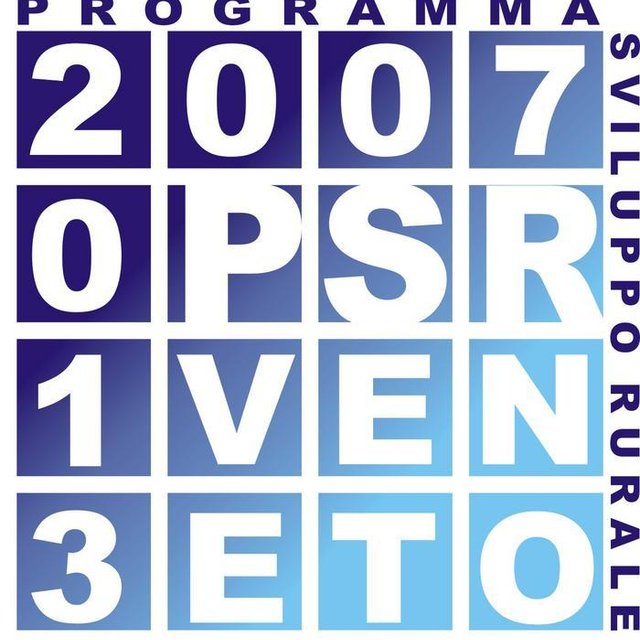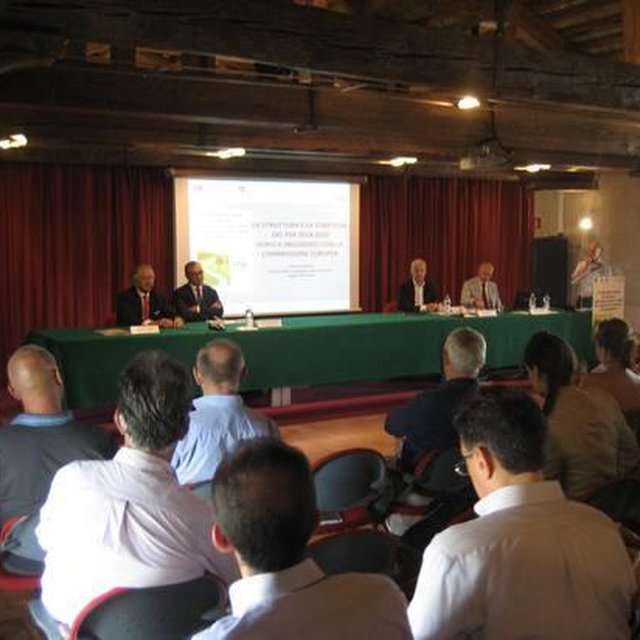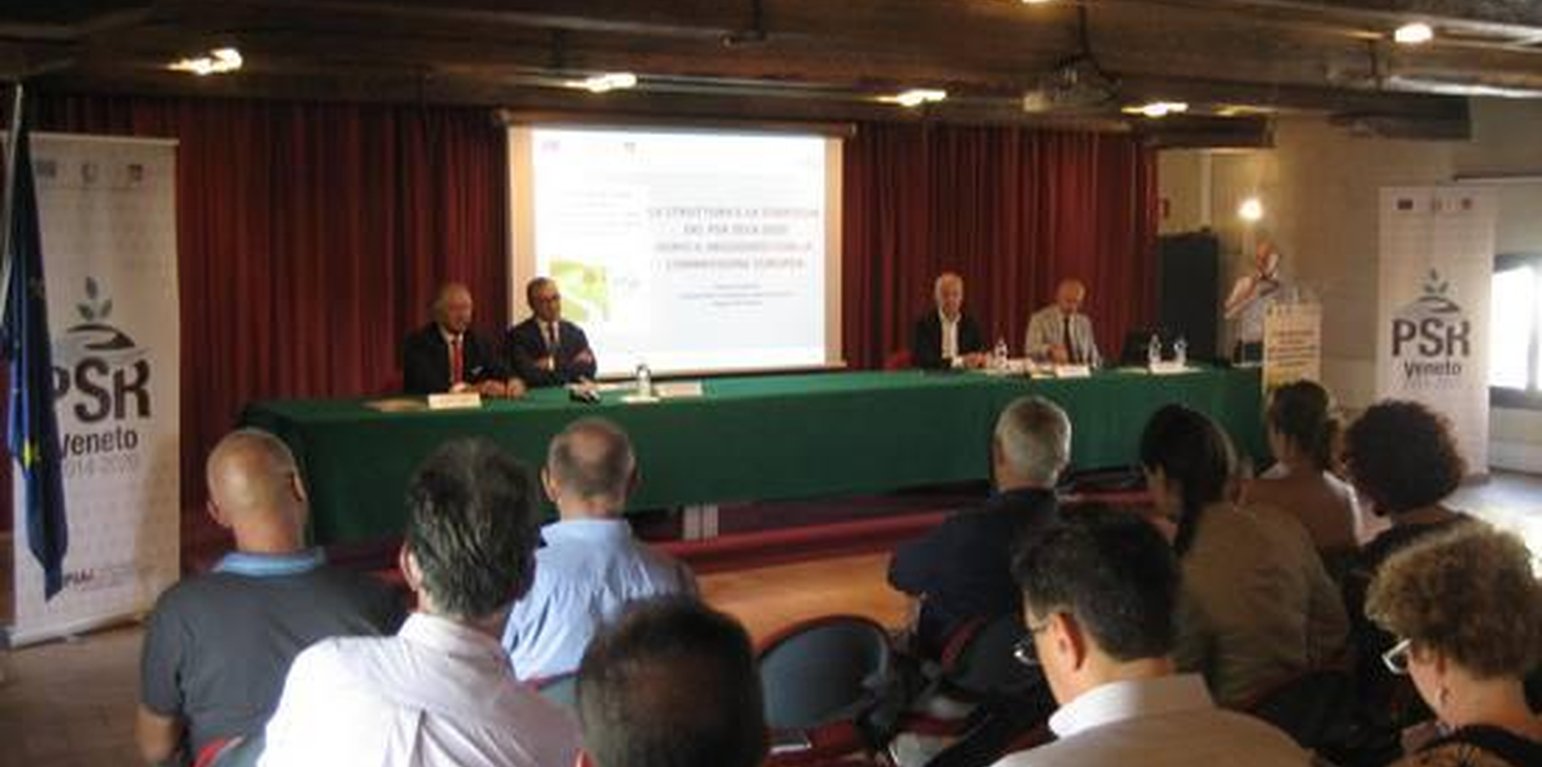Rural development programme in the Veneto region
(Italia)
Programma di sviluppo rurale in Veneto
Descripción
Developing rural areas in the Veneto region through sustainable land management policies
Aims / objectives: The objective of the Rural Development Programme (RDP) is to improve the farmers' activity by addressing economic, environmental and social challlenges. In this context, the RDP aims to grow the rural economy as well as improve the agro-environment. This is achieved by economically supporting: a) the multifunctionality of agriculture (e.g. crop production, natural environment, tourism etc.); b) the renovation of agriculture sector towards more efficient and competitive productive systems; c) the communities living and working in rural areas.
Methods: The Rural Development Programme is carried out through subsidies to farming practices following a cross-compliance principle. As a result, a combination of 'baseline' conservation measures with the RDP ones must be applied to achieve subsidised conservation measures.
Role of stakeholders: The level of subsidies is estimated on input or maintenance costs. Moreover, the yield loss is also taken into account due to implementation of some measures. These estimates were obtained through consultation among stakeholders, including farmer organisations, public enterprises and governments.
Other important information: The Rural Development Programme (RDP) in the years 2007-2013 was structured in four axes, corresponding to four lines of action: a) Improvement of competitiveness of the agricultural and forestry sector; b) Improvement of environment and rural areas; c) Improvement of quality of life and economic diversification in rural areas; d) Implementation of strategies for the local development.
Lugar
![]()
Lugar: Veneto region, Italy, Italia
Georreferencia de sitios seleccionados
Dato de inicio: 2007
Año de conclusión: 2013
Tipo de Enfoque
-
tradicional/ local
-
iniciativa local reciente/ innovadora
-
proyecto/ basado en un programa

Logo of the Rural Development Programme 2007-2013 (Veneto region)

Workshop on ther Rural Development Programme intiatives
Metas del Enfoque y entorno facilitador
Propósitos/ objetivos principales del Enfoque
The Approach focused mainly on SLM with other activities (fostering the competitiveness of agriculture; knowledge transfer; economic development in rural areas)
Rural development Programme (RDP) aims to improve both the socio-economic situation of rural areas as well as the agro-environmental quality. Main line of actions involve: a) increase of competitiveness of the agricultural and forestry sector; b) increase of environmental quality in rural areas; c) economic diversification of rural areas to promote a better quality of life.
The SLM Approach addressed the following problems: In the last decades, the over-simplification of agro-ecosystems due to intensive monoculture and high mechanisation led to reduced biodiversity, increased land degradation and water pollution and finally vulnerability of agroecosystems. A general low farm size and fluctuating commodity prices led to a reduction of incomes and inadequate generational turnover. These factors drove small farmers out of the market, especially in marginal areas, where the phenomenon has been associated to land abandonment (especially in hilly and mountainous areas).
Condiciones que facilitan la implementación de la/s Tecnología/s aplicadas bajo el Enfoque
-
Marco de trabajo legal (tenencia de tierra, derechos de uso de tierra y agua): The existing land ownership, land use rights / water rights moderately helped the approach implementation: The RDP is seen as an opportunity for the development of the rural areas and the adoption of SLM measures is fostered
Condiciones que impiden la implementación de la/s Tecnología/s aplicadas bajo el Enfoque
-
Normas y valores sociales/ culturales/ religiosos: Land users are seldom tied to traditional systems and new technologies are difficulty adopted.
Treatment through the SLM Approach:
-
Disponibilidad/ acceso a recursos y servicios financieros : Fundings are sometimes very few for implementation of technologies
Treatment through the SLM Approach:
-
Entorno institucional:
Treatment through the SLM Approach:
-
Marco de trabajo legal (tenencia de tierra, derechos de uso de tierra y agua):
Treatment through the SLM Approach:
-
Conocimiento de MST, acceso a apoyo técnico: Lack of expertise and technical skills for technology implementation
Treatment through the SLM Approach:
-
Carga de trabajo, disponibilidad de mano de obra:
Treatment through the SLM Approach:
Participación y roles de las partes interesadas involucradas
Partes interesadas involucradas en el Enfoque y sus roles
| ¿Qué partes interesadas/ entidades implementadoras estuvieron involucradas en el Enfoque? |
Especifique las partes interesadas |
Describa los roles de las partes interesadas |
| usuarios locales de tierras/ comunidades locales |
Difference between men and women because employees in the agriculture sector are traditionally men |
|
| especialistas MST/consejeros agrícolas |
|
|
| gobierno local |
|
|
| gobierno nacional (planificadores, autoridades) |
|
|
| organización internacional |
|
|
Agencia líder
The RDP is adopted by regional government, but also following the requests and the needs of land users.
Involucramiento de los usuarios locales de tierras/ comunidades locales en las distintas fases del Enfoque
ninguno
pasivo
apoyo externo
interactivo
auto-movilización
La toma de decisiones en la selección de Tecnología MST
Las decisiones fueron tomadas por
-
solamente usuarios de tierras (autoiniciativa)
-
principalmente usuarios de tierras con el apoyo de especialistas MST
-
todos los actores relevantes, como parte de un enfoque participativo
-
principalmente por especialistas MST en consulta con usuarios de tierras
-
solo por especialistas MST
-
por políticos/ líderes
La toma de decisiones se basa en
-
la evaluación de conocimiento MST bien documentado (la toma de decisiones se basa en evidencia)
-
hallazgos de investigaciones
-
la experiencia personal y opiniones (no documentadas)
Apoyo técnico, fortalecimiento institucional y gestión del conocimiento
Las siguientes actividades o servicios fueron parte del enfoque
-
Construcción de capacidades / capacitación
-
Servicio de asesoría
-
Fortalecimiento institucional (desarrollo institucional)
-
Monitoreo y evaluación
-
Investigación
Construcción de capacidades/ capacitación
Se proporcionó capacitación a las siguientes partes interesadas
-
usuarios de tierras
-
personal de campo/ consejeros
Forma de capacitación
-
en el contexto de trabajo
-
de agricultor a agricultor
-
áreas de demostración
-
reuniones públicas
-
cursos
Temas avanzados
Mainly training on technical implementation of the technology, access to finance and project planning.
Servicio de asesoría
Se proporcionó servicio de asesoría
-
en los campos de los usuarios de tierras
-
en centros permanentes
Name of method used for advisory service: Authorised advisory services, public and private; Key elements: Objectives, Project design, Administrative support
Advisory service is quite adequate to ensure the continuation of land conservation activities
Fortalecimiento institucional
Se fortalecieron/ establecieron instituciones
-
no
-
sí, un poco
-
sí, moderadamente
-
sí, mucho
Describa la institución, los roles y las responsabilidades, miembros, etc.
Tipo de apoyo
-
financiero
-
construcción de capacidades/ entrenamiento
-
equipo
Detalles adicionales
Monitoreo y evaluación
bio-physical aspects were monitored by government through observations
bio-physical aspects were monitored by government through measurements
management of Approach aspects were monitored by government through observations
There were few changes in the Approach as a result of monitoring and evaluation: Ameliorations in the calls to fit requirements and possible applications. (e.g. more adequate finacial compensations; administrative simplifications, etc.)
There were no changes in the Technology as a result of monitoring and evaluation
Investigación
La investigación trató los siguientes temas
-
sociología
-
economía/ marketing
-
ecología
-
tecnología
Financiamiento y apoyo material externo
Presupuesto anual en dólares americanos para el componente MST
-
< 2,000
-
2,000-10,000
-
10,000-100,000
-
100,000-1,000,000
-
> 1,000,000
Precise annual budget: n.d.
Approach costs were met by the following donors: local government (district, county, municipality, village etc): 100.0%
Los siguientes servicios o incentivos fueron proporcionados a los usuarios de las tierras
-
Apoyo financiero/material proporcionado a los usuarios de tierras
-
Subsidios para insumos específicos
-
Crédito
-
Otros incentivos o instrumentos
Apoyo financiero/material proporcionado a los usuarios de tierras
parcialmente financiado
totalmente financiado
equipo: maquinaria: herramientas
agrícola: semillas: fertilizantes
construcción: piedra: madera
infraestructura: caminos: escuelas
El trabajo de los usuarios de las tierras fue
-
voluntario?
-
comida por trabajo?
-
pagado en efectivo?
-
recompensado con otro tipo de apoyo material?
Crédito
-
Condiciones: n.d.
-
Proveedores de crédito: n.d.
-
Destinatarios del crédito: n.d.
Análisis de impacto y comentarios de conclusión
Impactos del Enfoque
No
Sí, un poco
Sí, moderadamente
Sí, mucho
¿El Enfoque ayudó a los usuarios de tierras a implementar y mantener Tecnologías MST?
The RPD aims at improving SLM practices in the Veneto region with an economic support. Biodiversity, environmental and water quality, soil protection are key elements of RDP to support SLM practices.
¿El Enfoque empoderó a grupos en desventaja social y económica?
Did other land users / projects adopt the Approach?
Whole around Italy and Europe the RDP was used as a tool for improving the environment and the quality of life in rural areas.
Motivación principal del usuario de la tierra para implementar MST
-
producción incrementada
-
incremento de la renta(bilidad), proporción mejorada de costo-beneficio
-
reducción de la degradación de la tierra
-
reducción del riesgo de desastres naturales
-
carga de trabajo reducida
-
pagos/ subsidios
-
reglas y reglamentos (multas)/ aplicación
-
prestigio, presión social/ cohesión social
-
afiliación al movimiento/ proyecto/ grupo/ redes
-
conciencia medioambiental
-
costumbres y creencias, moral
-
conocimiento y capacidades mejorados de MST
-
mejoramiento estético
-
mitigación de conflicto
Sostenibilidad de las actividades del Enfoque
¿Pueden los usuarios de tierras sostener lo que se implementó mediante el Enfoque (sin apoyo externo)?
Conclusiones y lecciones aprendidas
Fortalezas: perspectiva del usuario de tierras
Fortalezas: punto de vista del compilador o de otra persona recurso clave
-
The approach has a holistic view for the environment and human-well being improvement by including and integrating several SLM practices. (How to sustain/ enhance this strength: Include more SLM measures )
Debilidades/ desventajas/ riesgos: perspectiva del usuario de tierrascómo sobreponerse
-
Implementation of SLM due to the approach is time-consuming due to excessive bureaucracy
Administrative simplification
Debilidades/ desventajas/ riesgos: punto de vista del compilador o de otra persona recurso clavecómo sobreponerse
-
The adoption of some measures thanks to the approach is usually limited to the time in which there are subsidies, without
Maintain the subsidies and the approach for the longest possible time
Referencias
Fecha de la implementación: 22 de abril de 2015
Últimas actualización: 17 de julio de 2017
Personas de referencia
-
Nicola Dal Ferro (nicola.dalferro@unipd.it) - Especialista MST
-
Francesco Morari - Especialista MST
Descripción completa en la base de datos de WOCAT
La documentación fue facilitada por
Institución
- Programma Sviluppo Rurale 2003-2017 - Italia
- University of Padova (UNIPD) - Italia
Proyecto
- Preventing and Remediating degradation of soils in Europe through Land Care (EU-RECARE )
Referencias claves
-
Programma di sviluppo rurale per il veneto 2007-2013, Regione Veneto, 2007. Dipartimento Agricoltura e Sviluppo Rurale.:





